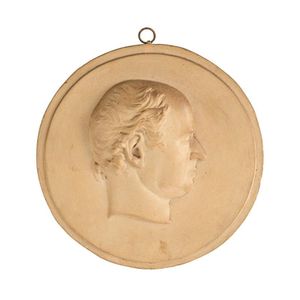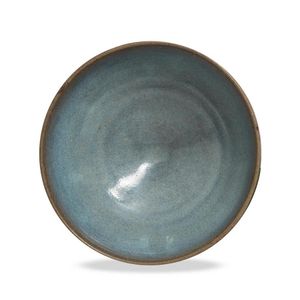Chinese Crackle Glaze Bowl with Carved Rim
You must be a subscriber, and be logged in to view price and dealer details.
Subscribe Now to view actual auction price for this item
When you subscribe, you have the option of setting the currency in which to display prices to $Au, $US, $NZ or Stg.
- Crackling and Crackle as a Decorative Technique - Crackle, also known as crackling, is a decorative technique that has been used in China for centuries. It is believed to have originated during the Song Dynasty (960?1279 AD) and was primarily used in the production of ceramics, lacquerware, and furniture. The crackling effect was achieved by applying a glaze or lacquer that was formulated to crack during firing, creating a crackled pattern on the surface of the item.
During the Ming Dynasty (1368?1644 AD), crackle became a highly sought-after decorative technique, and it was used to create intricate and beautiful designs on ceramics and lacquer ware.
In Western decorative arts, crackle / crackling came into use during the Art Nouveau movement in the late 19th and early 20th century. The crackling effect was used to create a sense of movement and fluidity in the design of Art Nouveau pieces.
It was also used in the 1920s and 1930s during the Art Deco movement. - Crackles / Cracquelure - In ceramics, crackles may be introduced intentionally during the firing process, as was often the case with Oriental ceramics, and are known as artificial crackles. Natural crackles occur with age, and if the glaze is transparent, may be difficult to detect. Natural crackles may not cover the whole surface of the object and may be uneven in size.
- Terracotta - Terracotta is lightly fired earthenware, red or reddish-brown in colour, used in ancient times. Fired at higher temperatures terracotta was used in the nineteenth century for decorative vases and similar objects, but rarely for utilitarian goods. Other uses for terracotta include roofing tiles, garden pots and ornaments. Glazed terracotta is known as faience.
This item has been included into following indexes:
Visually similar items

Thomas Woolner, plaster relief plaque of Dr. Godfrey Howitt renowned early Melbourne public identity who emigrated to Melbourne in 1840. Howitt formed a close relationship with Woolner who also did a plaque of Mrs Howitt & other Melbourne dignitaries inclu

A Song Dynasty (960-1279) Ding yao type white glazed bowl, interior decorated with a pair of fish. 16 cm diameter

Brown Ge ware dish with crackle glaze, firing flaws. Diameter 12.5 cm

A good Jun ware bowl, Yuan dynasty covered with a bright milky-blue glaze, darkening at the mouth rim, 8.2 cm high, 8.8 cm diameter
